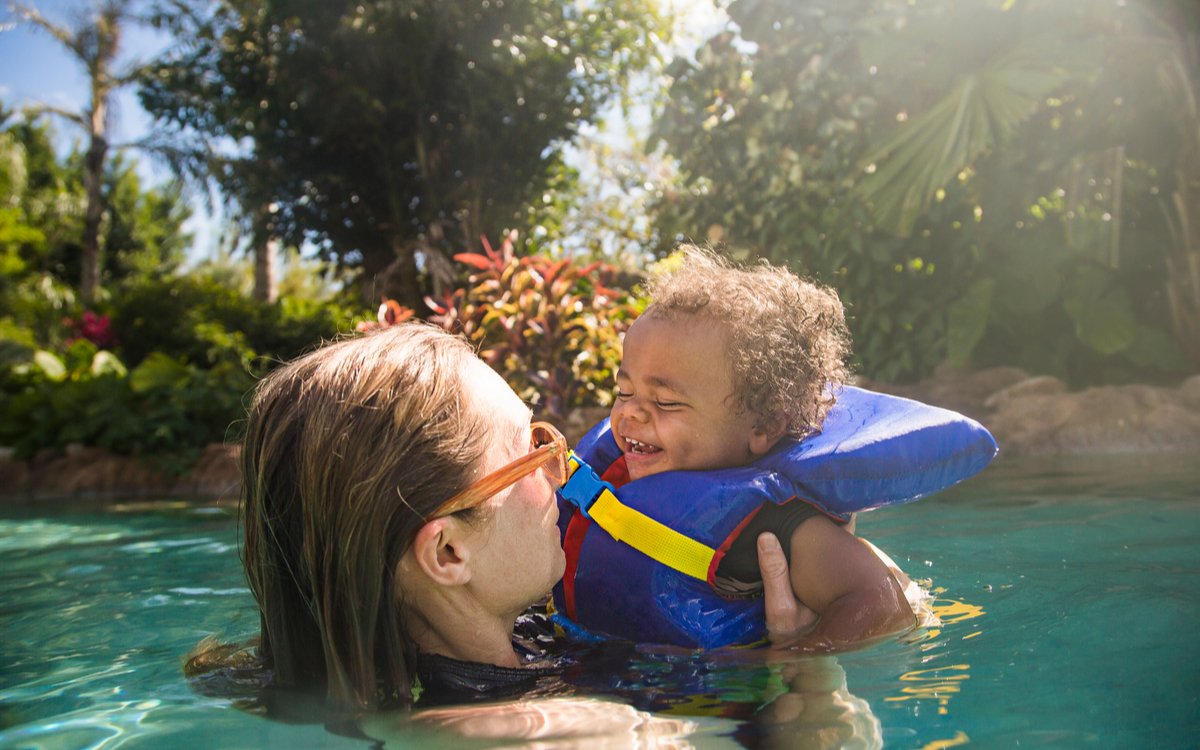Swimming pool safety rules parents of little children should know
When the weather gets hot, it’s nice to have a pool in the backyard where the kids can play and cool off. With proper preparation, pools can be both fun and very safe. Without it, accidents can happen. Young children are most at risk.
Drowning is the second leading cause of injury-related death in children younger than 4, right after car accidents, according to the Centers for Disease Control and Prevention. Most of these drownings unfortunately happen with unsupervised children.
“Young children are curious and like to explore, which is why it is so important to keep a close eye on them when they’re in or near water, and to never leave them alone or unsupervised,” says Robert Coles, MD, a pediatrician at Scripps Coastal Medical Center Carlsbad. “Just as important is to know what to do in case of an accident.”
Follow these simple tips for water safety.
1. Never leave children alone in or near the pool for any reason
Constant and focused adult supervision helps keep children safe around water. That means nodistractions that would take your eyes away from a child in or near a pool. “You want to make sure they’re staying safe,” Dr. Coles says. “Drowning can happen fast.”
You can teach your children to swim to help lower the risk of drowning. Swim lessons can begin for many children as early as 1. Just understand that learning to swim is only one of several layers of protection against drowning.
“Even if they’ve had swim lessons, they still need to be closely supervised when they are in or around water, Dr. Coles says.
2. Keep gated pools
Pool fencing is widely recommended to help prevent drownings. Most young children who drown in pools wander out of the house and fall into a pool that was not fenced off from the house. Fences should be at least 4 feet high without anything that the child could use to climb over the fence. Gates should be self-closing and self-latching. The latch should be out a child’s reach. Slat space should be small enough to prevent a child to squeeze through the fence. A pool safety cover adds protection but should not be used in place of fencing between the house and the pool.
3. Go over pool rules
Go over the rules for how and when to use the pool with your children and review them again whenever there are guests using the pool. The basic pool rules are:
No diving headfirst into the shallow sections of the pool
No swimming alone
No running, pushing or shoving
Post these rules near the pool and enforce them.
4. Designate a lifeguard
If you have a pool party, make sure a responsible adult is actively watching children in or near the water. Consider using a badge or a label to clearly identify them as a water watcher or designated lifeguard. Adult supervisors should not be engaged in activities that would distract their attention.
5. Don’t rely on floaties for water safety
Young children should wear a life jacket that is Coast Guard-approved when in or around water. Make sure they fit properly. Do not rely on floaties or other air-filled swimming aids. They are not safety devices.
6. Practice touch supervision
Whenever children under 5 are in or around the pool, an adult should be within arm’s reach of the child, even if he or she knows how to swim. This is known as touch supervision.
7. Learn CPR
Sometimes accidents happen. It’s important to know what to do in case of an emergency. Learn CPR and basic water rescue skills. CPR certification classes are available through the American Red Cross, hospitals and community centers.


